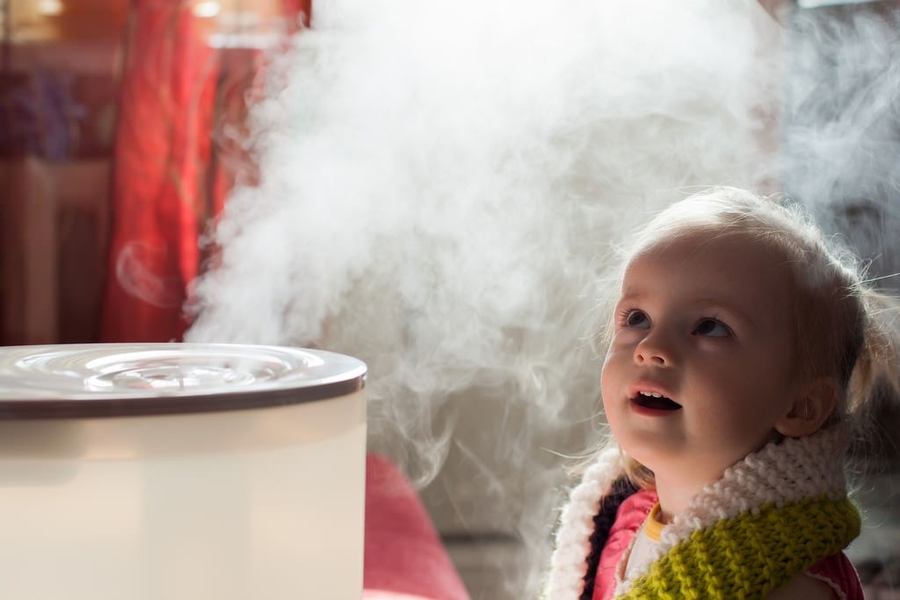
Normal Respiration Rate In Children
19 Feb 2018 | 5 min Read
Babychakra
Author | 1369 Articles
Normal respiration is like air, we do not notice its presence, rather absence, unless it goes off balance.
Respiration or breathing is a basic and critical life process that maintains balance of oxygen and carbon dioxide levels in our body. The rate of respiration is largely influenced by the weight, size and activity levels of the body.
What is the normal respiration rate in children?
Children usually breathe faster than adults. The Normal respiration rate in children is 30-60 breaths per minute, while that of adults is 18-22 breaths per minute.
However, all children are not alike. Their body shape, structure and size is determined by their age as well as their parents’ physical structure (genetic background). Various studies show that there is a slight difference in respiration rate amongst children; but the trend of reducing respiration rate with increase in age holds true in all children. Other factors that influence respiration rate are activity levels, weight, growth and developmental milestones.
Here is a respiration rate chart that gives an idea about normal respiratory rate by age:
|
Age |
Respiration rate |
|
Neonate |
40 – 60 breaths per minute |
|
Infant |
25 – 35 breaths per minute |
|
Toddler |
20 – 30 breaths per minute |
|
Preschooler |
16 – 24 breaths per minute |
|
School going |
14 – 22 breaths per minute |
|
Adolescent |
14 -20 breaths per minute |
Why do children breathe faster than adults?
Respiration delivers oxygen to the developing organs of your child. It also helps in removing carbon dioxide and waste products produced by the various tissues during growth and metabolism. A child requires more amount of oxygen for developing new tissues, nerves and bones as compared to adults. Children also produce more carbon dioxide due to the high metabolism and growth rate.
Owing to smaller body structure, small lung size and very high metabolic rate along with growing organs-tissues, children tend to respire faster than adults.
How do I measure my child’s respiration rate?
It is very easy to measure the respiration rate of your child. For respiratory rate measurement, all you need is a watch or a clock. You have to simply count breathing cycles, single inhalation and exhalation completes one cycle. Counting the number of such cycles completed in a minute gives the respiratory rate. Apart from this, respiration rate can also be monitored by a respiratory rate monitor, which is usually available in a hospital set up and used for measuring the respiratory rate of newborn baby.
While checking your child’s respiration rate, it is better to check for the depth of respiration too. Several factors like crying, restlessness or pain can disturb the rate as well as the depth of breathing.
What if my child is breathing too fast or too slow? And what does it indicate?
Most illnesses in childhood affect the respiration rate of the child. If they breathe too fast, it can signal an underlying respiratory infection. This especially holds true if your baby is less than 3 years old.
Your child’s breathing is too fast if your child –
- is < 1 year old and the respiration rate is more than 60 cycles/minute
- is 1-3 years old and the respiration rate is more than 35 cycles/minute.
This increased rate can be due to disease conditions like
- Bronchitis, Bronchiolitis – It is an infection of the air passages of the lungs that can cause cough, fever, wheezing, running nose and feeding difficulties.
- HRAD (Hyper reactive airway diseases or Asthma) – It is childhood asthma that is usually associated with coughing and wheezing.
- Pneumonia – It is a lung infection that is much more dangerous than bronchiolitis and causes high fever, cough, difficulty in breathing and vomiting.

If your child’s breathing is too irregular, i.e. if he doesn’t breathe for 5-10 seconds or his breathing rate is below 20 or 30 cycles/minute, this can be due to sleep apnea, which is associated with snoring.
If my child’s respiration is abnormal, what things should I consider before reporting it to my pediatrician?
It is quite normal for your little one to have frequent lung infections as they are still building up their immunity to various microbes. Some data suggests that a child can get up to 12 infections per year, each lasting up to a week, and this is normal.
Different disease conditions may have similar presentations, so at times it is difficult for you to figure out, what your child is suffering from. Here are few warning signs or symptoms which must prompt you to visit a pediatrician when noted in your child:
- Refuses feeds
- Has a poor sleep cycle i.e. if your child sleeps more than normal or sleeps too less than normal
- Reduced activity levels, looking lethargic, drowsy
- Cries excessively
- High fever not reducing even with paracetamol
- Reduced urine output
- Worsening symptoms
Disclaimer: The information in the article is not intended or implied to be a substitute for professional medical advice, diagnosis or treatment. Always seek the advice of your doctor.
Also read – Make Each Breath Count with Inhalation Therapy
Explore the entire collection of articles: Kid’s Health
A


Related Topics for you
Suggestions offered by doctors on BabyChakra are of advisory nature i.e., for educational and informational purposes only. Content posted on, created for, or compiled by BabyChakra is not intended or designed to replace your doctor's independent judgment about any symptom, condition, or the appropriateness or risks of a procedure or treatment for a given person.
